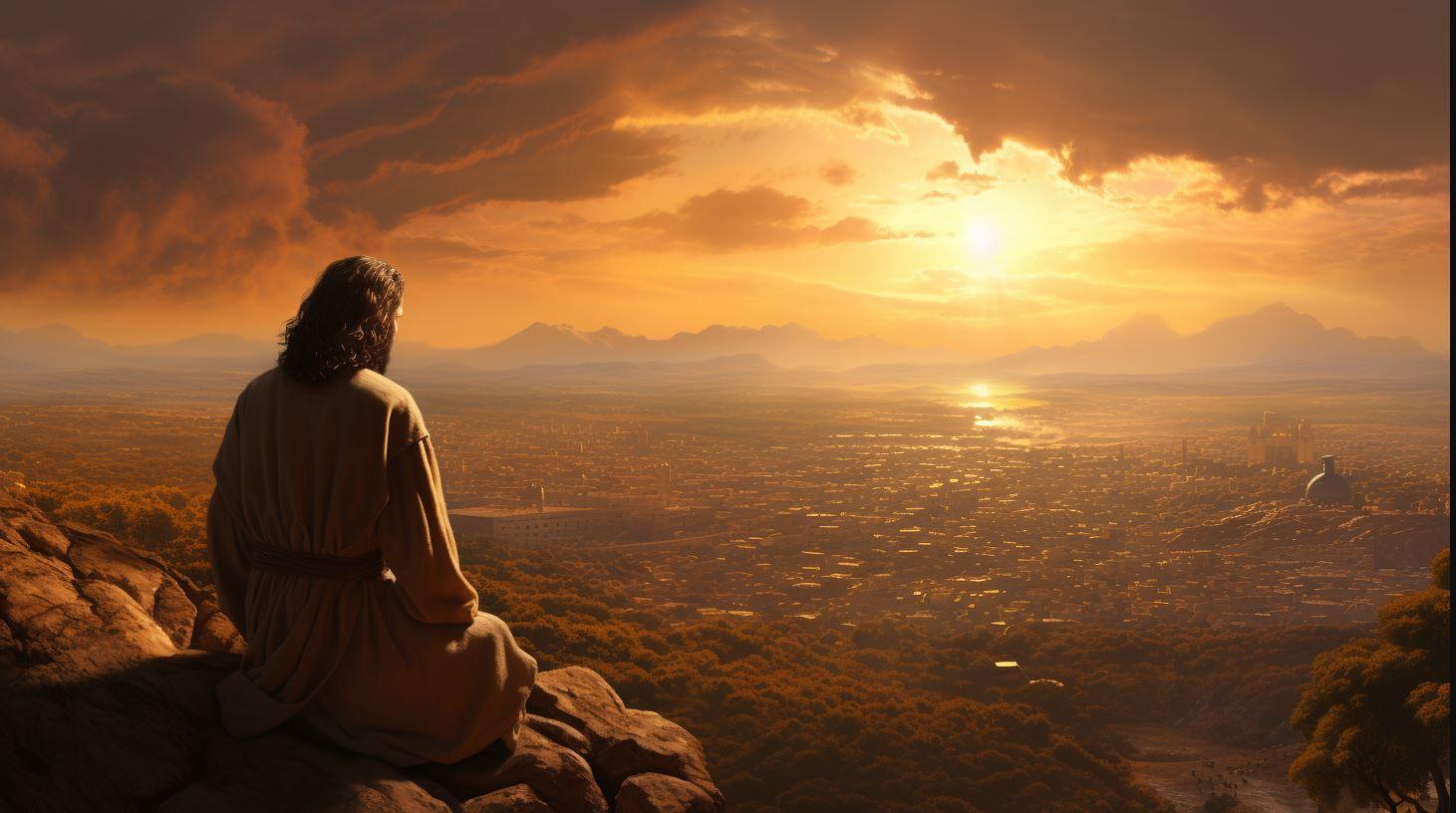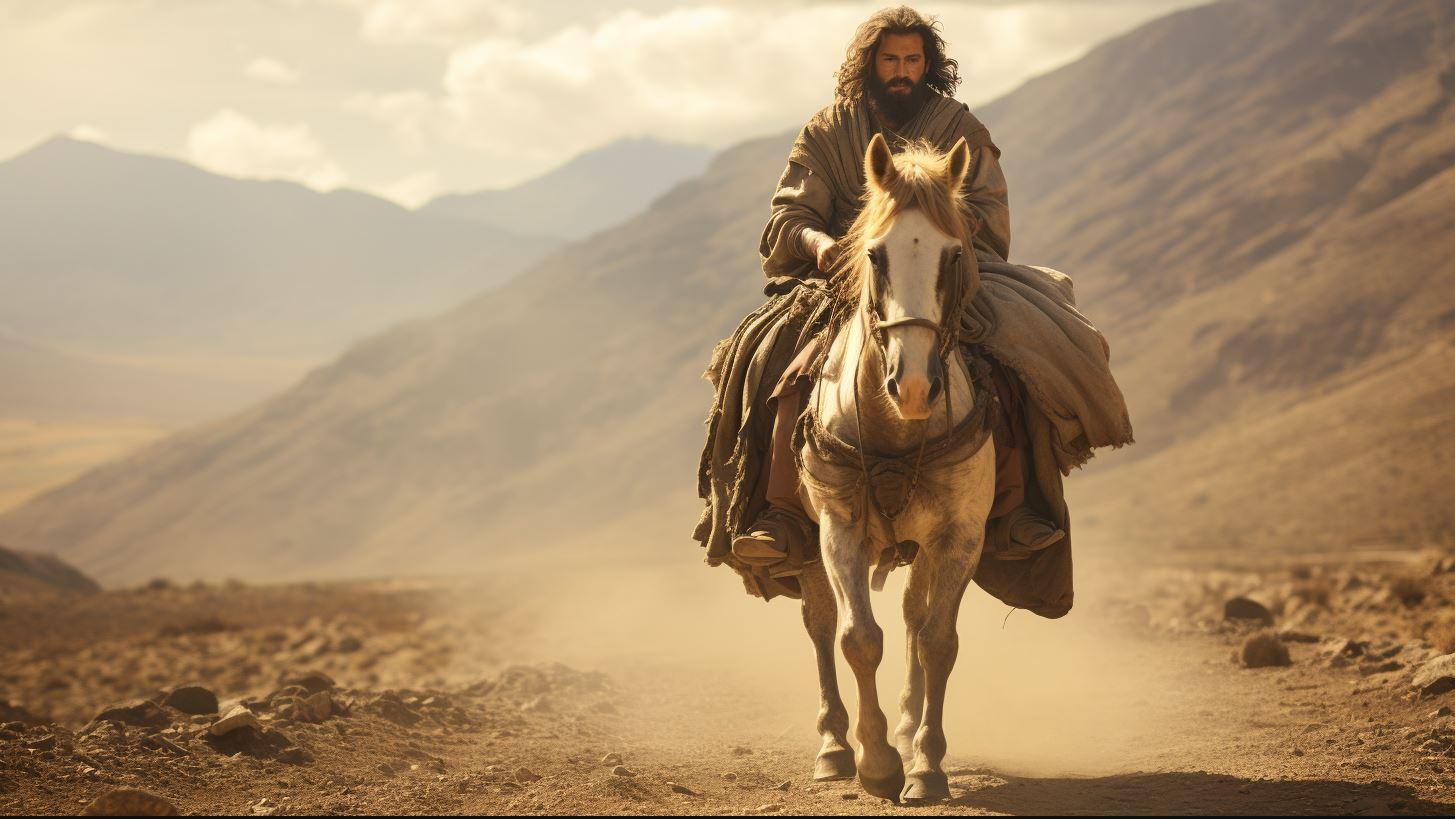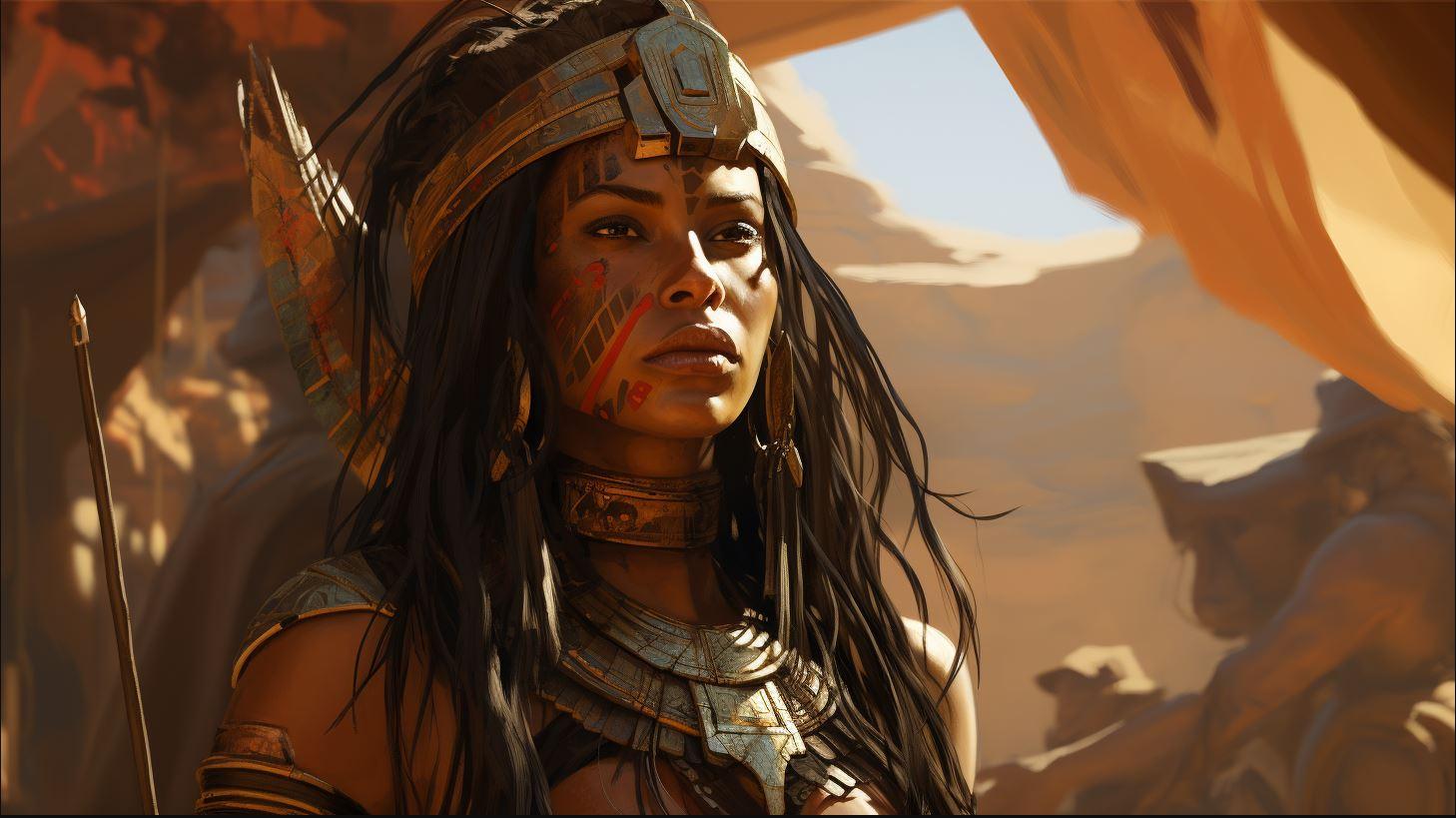Canaanite Gods and Goddesses: Unveiling the Mysteries of Ancient Deities
Canaanite gods and goddesses, rooted in ancient history and mythology, hold significant importance in understanding the religious beliefs of the ancient Canaanite civilization. From Baal and Asherah, gods of power and fertility, to Anat and Yam, deities of war and the sea, each divine figure played a vital role in their pantheon.
This article explores their origins, their presence in the Bible, and their influence on Ancient Israel, shedding light on the intriguing world of Canaanite mythology and its enduring legacy in archaeological discoveries.
List of Canaanite Gods and Goddesses
The Origins of Canaanite Gods and Goddesses
The origins of Canaanite gods and goddesses can be traced back to the ancient Canaanite civilization, which flourished in the region now known as Israel and Palestine during the Bronze Age.
These deities were a central part of Canaanite religious beliefs and played a crucial role in their society.
Canaanite mythology depicted gods and goddesses as powerful beings who controlled various aspects of life. They were personifications of natural forces, celestial bodies, and abstract concepts. The origins of these deities can be found in the local cultures and traditions of the ancient Near East, as well as influences from neighboring civilizations such as Egypt and Mesopotamia.
The Canaanite pantheon consisted of a diverse array of gods and goddesses, each with their unique domains and attributes. While some deities were associated with fertility, agriculture, and nature, others represented war, death, and the underworld.
Over time, the Canaanite gods and goddesses underwent evolution and assimilation with other regional or conquering civilizations, adding layers of complexity to their origins and identities.
- The gods and goddesses of Canaanite origin were deeply interconnected with the land and its resources.
- They represented the aspirations, fears, and aspirations of the ancient Canaanite people.
- The origins of Canaanite deities can be seen as an amalgamation of cultural exchanges and unique local practices.
Exploring the origins of Canaanite gods and goddesses sheds light on the rich tapestry of beliefs and influences that shaped the religious worldview of the ancient Canaanites.
List of the Canaanite Gods and Goddesses
The Mythology of Baal and Asherah
In the rich tapestry of Canaanite mythology, Baal and Asherah emerge as prominent and influential deities.
Baal, known as the storm god, symbolizes fertility, rain, and agricultural abundance. His power is seen in his ability to control the weather and ensure fruitful harvests.
Asherah, on the other hand, is the goddess of fertility and motherhood, regarded as the nurturing force of nature.
The mythology surrounding Baal and Asherah tells tales of epic battles, divine romance, and cosmic power struggles. Baal‘s triumph over Yam, the god of the sea, solidifies his position as a supreme deity.
Asherah‘s divine union with Baal results in the birth of numerous gods and goddesses, further enriching the Canaanite pantheon.
An important aspect of their mythology is the construction of sacred pillars and places of worship dedicated to both Baal and Asherah. These religious practices highlight the veneration of nature and the belief in their influence on the fertility of the land.
Exploring the mythology of Baal and Asherah deepens our understanding of the Canaanite worldview and their reverance for the forces of nature. Their stories shed light on the significance of agriculture and fertility in this ancient civilization, offering a glimpse into the religious beliefs and practices of the Canaanite people.
Canaanite Deities in the Bible
The influence of Canaanite gods and goddesses can be observed in various passages of the Bible, shedding light on the religious beliefs and practices of the ancient Canaanite civilization. In these biblical accounts, we encounter references to prominent Canaanite deities such as Baal and Asherah.
Baal, the storm god associated with fertility and rain, was often depicted as a rival to Yahweh, the God of Israel. The worship of Baal was condemned in the Bible as idolatry, reflecting the tension between the Canaanite religion and the emerging monotheistic faith of the Israelites.
Asherah, the mother goddess and consort of Baal, was also prominent in Canaanite mythology. Her worship involved fertility rituals and the use of sacred poles or trees. The presence of Asherah worship among the Israelites is mentioned in several biblical accounts, generating debates among scholars regarding the extent of this influence.
These biblical references provide valuable insights into the religious landscape of ancient Canaan and its interaction with the Israelite culture. By examining the stories, traditions, and prohibitions related to Canaanite deities, we gain a deeper understanding of the complex religious dynamics of the region.
Anat and Yam: Gods of War and the Sea
Anat and Yam, two prominent deities in Canaanite mythology, personify the realms of war and the sea respectively.
Anat, also known as Anath, is a powerful goddess associated with combat, fertility, and passion. She is depicted as a fierce warrior, often armed with weapons like a spear or a bow.
Anat‘s role in mythology involves protecting her people and fighting against enemies. She symbolizes strength, courage, and the determination to overcome challenges.
Yam, on the other hand, is a god representing the vast and unpredictable sea. He embodies its mysteries, power, and potential for both destruction and abundance. Canaanites believed that Yam controlled storms, waves, and the creatures dwelling in the deep waters.
The sea was vital for trade and maritime activities in the ancient Near East, making Yam an important deity in the Canaanite pantheon.
The mythology surrounding Anat and Yam often intertwines, as they engage in epic battles and confrontations. Anat‘s ferocity and Yam‘s domain of the sea come together in stories of conflicts, with Anat emerging victorious and asserting her dominance over the forces of chaos.
Understanding Anat and Yam offers valuable insights into Canaanite beliefs regarding war and the sea, shedding light on the cultural and religious significance of these deities within the ancient Canaanite civilization.
Mot: The God of Death and the Underworld
Mot, a significant figure in Canaanite mythology, was revered as the god of death and the underworld. According to ancient beliefs, Mot ruled over Sheol, the realm of the dead, where souls descended after their earthly existence.
Depicted as a fearsome and relentless deity, Mot was often portrayed as a devouring monster. He embodied the cyclical nature of life and death, symbolizing the inevitable end that awaited all mortals.
The Canaanites feared Mot‘s power, as his grip on life was unyielding and inescapable.
Worship of Mot involved rituals and offerings to appease his wrath and ensure a peaceful transition to the afterlife. This included burial practices and ceremonies aimed at securing divine favor for departed souls.
The Canaanites believed that Mot‘s judgment determined the fate of these souls in the underworld.
While Mot primarily represented death, his importance extended beyond mortality. He symbolized the natural cycles of growth and decay, as well as the rejuvenation of life. In this way, Mot‘s connection to the underworld also encompassed new beginnings and the perpetuity of existence.
Understanding the significance of Mot in Canaanite mythology provides valuable insights into the complex beliefs and customs surrounding death and the afterlife in this ancient civilization.
Canaanite Religious Practices and Beliefs
The religious practices and beliefs of the ancient Canaanites revolved around their profound reverence for the gods and goddesses of their pantheon. These deities were seen as powerful beings who controlled various aspects of their daily lives, including fertility, war, and the forces of nature.
The Canaanites participated in a wide range of rituals and ceremonies to honor their gods. These included elaborate sacrifices, prayers, and offerings, often conducted by priests and priestesses in sacred temples and shrines.
They believed in the importance of maintaining a harmonious relationship with the divine, seeking favor and protection from their gods through these acts of devotion.
- The Canaanites worshipped fertility deities, such as Baal and Asherah, to ensure the abundance of crops and livestock.
- They also revered nature deities like El, the father of the gods, and Anat, the goddess of war, who represented the raw power of the natural world.
- Another prominent deity was Mot, the god of death and the underworld, who played a crucial role in their beliefs about the afterlife.
These religious practices were deeply ingrained in Canaanite society and influenced various aspects of their culture, including art, literature, and social norms.
They believed that their gods demanded their faithful devotion and strict adherence to their religious customs.
The significance of Canaanite religious practices and beliefs extended beyond their own civilization, influencing neighboring cultures and even leaving traces in later religions, including Ancient Israel’s worship of Yahweh.
Worship of Fertility and Nature Deities
In ancient Canaanite society, the worship of fertility and nature deities played a central role in religious practices. These deities were revered for their ability to bestow abundance, prosperity, and the fruitful cycle of life.
The Canaanites deeply believed in the intrinsic connection between their agricultural livelihoods and the divine forces that governed the natural world.
Chief among the fertility deities was Baal, the god of rain and storm. He was worshipped as the provider of vital water to nourish the crops, ensuring a bountiful harvest.
The Canaanites celebrated Baal through rituals and offerings, seeking his favor and protection for their agricultural endeavors.
Another important nature deity was Asherah, the goddess of motherhood and fertility. As the divine consort of Baal, Asherah symbolized the nurturing and life-giving aspects of nature. She was honored through sacred groves and fertility rites, seeking her blessings for the continuation of family and lineage.
The worship of fertility and nature deities extended beyond Baal and Asherah, as other gods and goddesses represented specific aspects of the natural world. These included Anat, the goddess of love and war, and Yam, the god of the sea.
Each deity had their own unique role and significance in Canaanite society, with worshippers seeking their favor and protection through prayers, offerings, and ceremonies.
The reverence for fertility and nature deities among the Canaanites emphasized their deep connection to the land and the cycles of life. Their religious practices were intimately intertwined with the rhythms of agriculture, reflecting the importance of the natural world in their daily lives.
Yahweh and the Canaanite Pantheon
One significant aspect of Canaanite mythology is the relationship between Yahweh, the God of Israel, and the Canaanite pantheon. The Canaanite gods and goddesses played a significant role in the religious and cultural landscape of ancient Canaan, which had a profound influence on the development of Israelite religious beliefs.
Yahweh, who later became the central deity in monotheistic Judaism, was initially considered a part of the Canaanite pantheon. The early Israelites, who were influenced by the Canaanite religious practices, initially worshipped both Yahweh and the Canaanite gods and goddesses.
However, as Israelite religion evolved, Yahweh gradually emerged as the sole deity worthy of worship, displacing the other Canaanite gods and goddesses. This process, known as henotheism, involved the elevation of Yahweh to a superior status compared to the other deities in the pantheon.
The incorporation of Canaanite religious elements into Israelite worship, along with the subsequent religious reforms, affected the understanding and portrayal of Yahweh in the Hebrew Bible. The biblical texts often depict Yahweh in conflict with the Canaanite gods, demonstrating the theological shift away from polytheism towards the exclusive worship of Yahweh.
Understanding the relationship between Yahweh and the Canaanite pantheon provides valuable insights into the religious transformation that occurred within ancient Israel. It illuminates the complex interplay between different cultural and religious traditions and sheds light on the theological development of monotheism.
Ancient Israel and the Influence of Canaanite Religion
The civilization of Ancient Israel was deeply influenced by the neighboring Canaanite religion, which shaped various aspects of their religious practices and beliefs. The close proximity of the Canaanite and Israelite regions resulted in cultural exchange and the adoption of certain Canaanite deities by the Israelites.
The Israelites’ religious traditions incorporated elements of Canaanite rituals and worship. They recognized the power and importance of Canaanite gods and goddesses, even as they developed their own unique monotheistic beliefs centered around Yahweh.
Despite the efforts to distance themselves from Canaanite religion, traces of Canaanite influence can be seen in the Biblical texts. References to Asherah, the fertility goddess, and Baal, the storm and fertility god, demonstrate the lasting impact of Canaanite mythology on the religious and cultural fabric of Ancient Israel.
Archaeological discoveries have further confirmed the integration of Canaanite religious practices in Ancient Israel. Excavations have unveiled artifacts and inscriptions that attest to the worship of Canaanite deities alongside Yahweh. This coexistence indicates the complex nature of religious beliefs and the ongoing syncretism between Canaanite and Israelite cultures.
The study of Ancient Israel and its connection to Canaanite religion provides valuable insights into the historical development of religious traditions in the region. Understanding the influence of Canaanite gods and goddesses expands our knowledge of the interconnectedness of ancient civilizations and sheds light on the rich tapestry of religious beliefs in this era.
The Unveiling of Canaanite Gods and Goddesses in Archaeology
Archaeological excavations have shed new light on Canaanite gods and goddesses, providing valuable insights into their roles in ancient Canaanite society. These discoveries have unearthed artifacts, inscriptions, and religious sites that offer clues about the worship and reverence of these divine beings.
One significant finding is the Temple of Baal in Ugarit, where tablets containing hymns, rituals, and prayers to various Canaanite deities were uncovered. These texts illuminate the religious practices and beliefs of the Canaanites, revealing the importance of these gods and goddesses in everyday life.
Another remarkable discovery is the Ras Shamra Tablets, also known as the Ugaritic texts, which provide intricate details about the mythology and characteristics of Canaanite gods and goddesses. These writings offer glimpses into the relationships, stories, and significance of each deity within the pantheon.
The excavation of ancient Canaanite cities, such as Hazor and Megiddo, has revealed numerous votive objects and depictions of gods and goddesses, showcasing the Canaanites’ devotion and religious fervor.
By uncovering these archaeological treasures, researchers have pieced together the puzzle of Canaanite religion and gained a deeper understanding of the divine beings that once held immense influence over the ancient Canaanite civilization.
- Temple of Baal in Ugarit: Unearthing tablets with hymns, rituals, and prayers
- Ras Shamra Tablets: Intricate details about Canaanite deities and their stories
- Depictions of gods and goddesses in votive objects and ancient Canaanite cities
Comparing Canaanite Deities with Greek and Roman Gods
When exploring the fascinating realm of ancient mythology, a natural curiosity arises in comparing different pantheons and their respective deities.
In the case of Canaanite gods and goddesses, intriguing parallels can be drawn with the gods of Greek and Roman mythology.
One notable parallel lies in the similarities between Baal, the Canaanite storm god, and Zeus, the powerful ruler of the Greek gods. Both figures embody thunder and lightning, symbolizing their dominion over the heavens and their association with power and authority.
Another intriguing comparison can be made between Asherah, the revered Canaanite goddess of fertility and motherhood, and Demeter, the Greek goddess of agriculture and abundance. Both deities are closely associated with the earth’s bountiful harvest and the cycle of life.
However, despite these resemblances, it’s essential to recognize that Canaanite mythology has its distinct characteristics and unique deities that differentiate it from Greek and Roman mythology. By comparing these pantheons, we gain a deeper understanding of the diverse ways ancient civilizations conceptualized and revered their gods.
- The storm gods: Baal (Canaanite) and Zeus (Greek)
- The fertility goddesses: Asherah (Canaanite) and Demeter (Greek)
- Exploring their symbolisms and roles in mythology
- The cultural and historical significance of these deities
By delving into the comparisons between Canaanite gods and goddesses and their Greek and Roman counterparts, we unearth captivating insights into the shared themes and distinctive aspects of these ancient mythologies.
Controversies and Interpretations: Canaanite Religion in the Old Testament
The relationship between Canaanite religion and the Old Testament has sparked debates and yielded various interpretations among scholars and theologians. This section delves into the controversies surrounding the incorporation of Canaanite religious elements into the biblical narrative.
- 1. Syncretism and Cultural Exchange: Some argue that the Old Testament exhibits signs of syncretism, where elements of Canaanite religion were merged or adapted into Israelite worship. This suggests a cultural exchange and influence between the two belief systems.
- 2.Religious Polemics:Others propose that the biblical texts aimed to challenge and condemn Canaanite religious practices. They argue that the Old Testament narratives present Canaanite gods and goddesses as false idols, emphasizing the exclusivity of worshiping Yahweh.
- 3.Historical Context:The interpretation of Canaanite religion in the Old Testament also takes into account the historical context. Some argue that the biblical writers sought to distance themselves from Canaanite religious practices to assert Israel’s unique identity and separation from neighboring cultures.
- 4.Symbolic Representation:Scholars also explore the symbolic representation of Canaanite gods and goddesses in the Old Testament. They suggest that these deities may serve as metaphors or symbols for natural and cosmic forces, rather than literal divine beings.
In conclusion, the presence of Canaanite religious elements in the Old Testament sparks controversies and invites diverse interpretations.
The interplay between cultural exchange, religious polemics, historical context, and symbolic representation contributes to a nuanced understanding of Canaanite religion within the biblical framework.
The Legacy of Canaanite Mythology and Religion
The Canaanite mythology and religion have left a profound legacy, influencing various aspects of ancient and modern societies. Here are key elements that showcase the lasting impact of Canaanite gods and goddesses:
- Cultural Influence: Canaanite mythology has deeply influenced neighboring cultures, including Ancient Israel and Phoenicia.Elements of Canaanite religious beliefs, rituals, and iconography can be seen in the religious practices and art of these civilizations.
- Archaeological Discoveries: Excavations throughout the Canaanite region have unearthed ancient temples, artifacts, and inscriptions dedicated to these deities.These discoveries provide valuable insights into Canaanite religious practices and serve as tangible evidence of their existence.
- Literary Influence: Canaanite mythology has left its mark in ancient texts, particularly in the Hebrew Bible.References to Canaanite deities can be found in various biblical stories, influencing the development of religious narratives and theological concepts.
- Mythological Connections: Canaanite gods and goddesses display similarities and connections with other ancient mythologies, such as Greek and Roman pantheons.Comparative studies of these mythologies shed light on shared themes and the cross-cultural exchanges of ancient civilizations.
While the worship of Canaanite gods and goddesses may have declined over time, their influence continues to be felt in various aspects of history, art, and literature.
Understanding the legacy of Canaanite mythology deepens our knowledge of ancient civilizations and enriches our exploration of the human cultural heritage…




